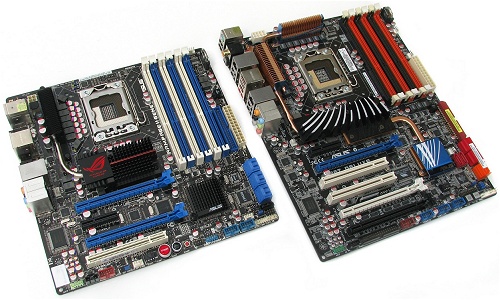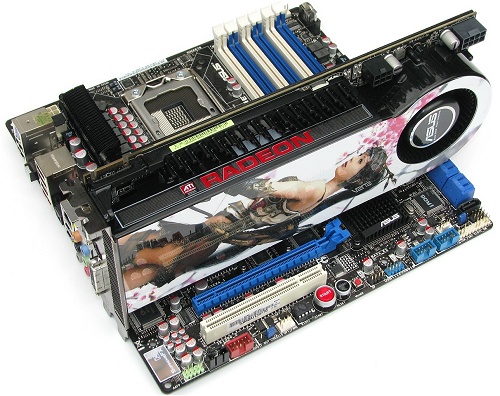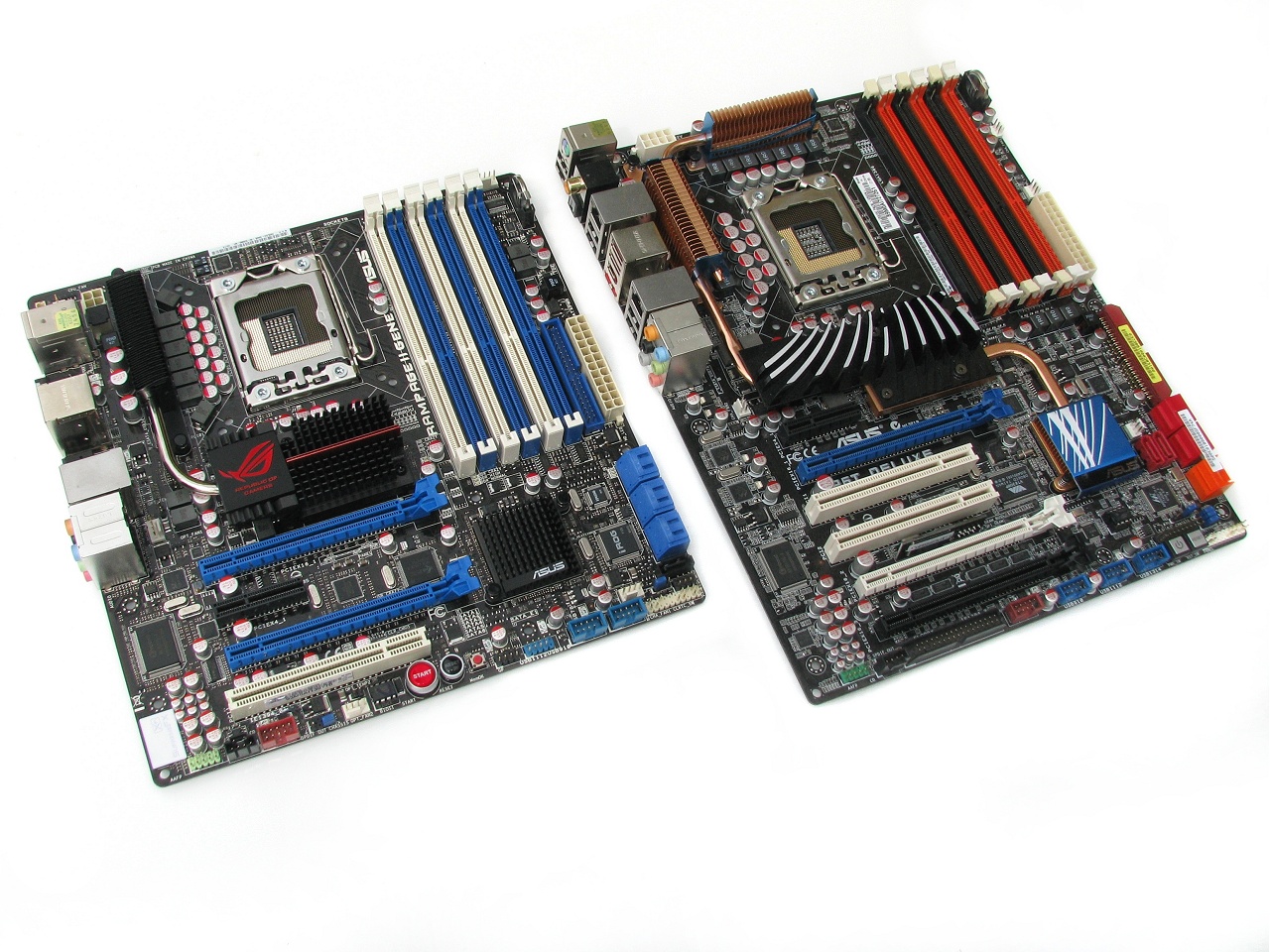Board Design & Layout
The design behind this little Core i7 microATX motherboard really makes sense, but we should probably thank Intel first because both Core i7 processors and the X58 chipset are extremely efficient.
Although some X58 motherboards feature over the top cooling using massive heatsinks and even water-blocks the truth of the matter is that they are not needed.



The IOH (Input/Output Hub) only has a TDP rating of 24 watts which can be adequately cooled by a modestly-sized heatsink like the one found on the Rampage II GENE. The north bridge heatsink is connected to another heatsink featuring 26 fins which cools the 8-phase power circuitry for the CPU. The south bridge or ICH10R is also passively cooled by a much smaller heatsink.

While Intel only managed to squeeze four DIMM slots onto their standard ATX motherboard at launch, Asus did away with the full six slots on this mATX board.
Asus has also solved another problem that has plagued motherboards for years. Often we find that when the DIMM slots are placed too close to the primary PCI Express slot it becomes impossible to install memory modules without first removing the graphics card. This can be a pain staking process for those using larger graphics cards in smaller cases as they can be quite awkward to remove.

Asus has removed the DIMM slot clips from the bottom of the slots keeping them only at the top where they are easily accessible. This means that the user needs only to use the top clips to remove and install memory modules eliminating the annoying DIMM/PCIe conflict.

Another annoying conflict found on many motherboards arises when using long graphics cards and trying to access SATA ports. By mounting the SATA ports at a 90-degree angle it is possible to use all six SATA ports even if two high-end graphics cards are installed.

Speaking of multiple graphics cards we were amazed to learn that the Rampage II GENE supports both CrossfireX and SLI technology. The only catch here is that dual-slot cards will not have any space separating them as there is just one PCI Express x4 slot situated between the primary and secondary PCIe x16 slots.


Furthermore, when using SLI or Crossfire technology the second graphics card will block access to the motherboard's on-board power/reset and MemOK! buttons though for the most part this shouldn't be an issue. Overall the Rampage II GENE board design and layout is well thought out.
